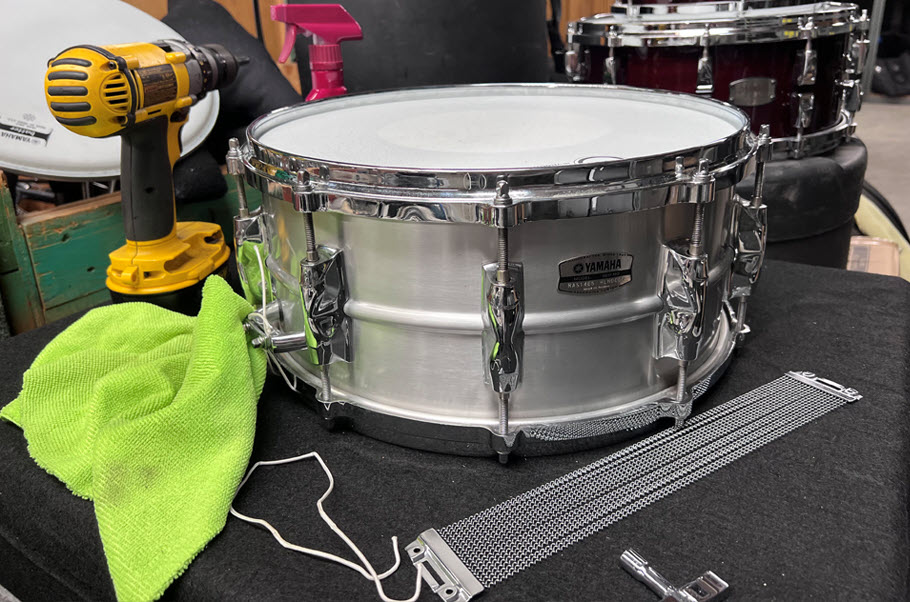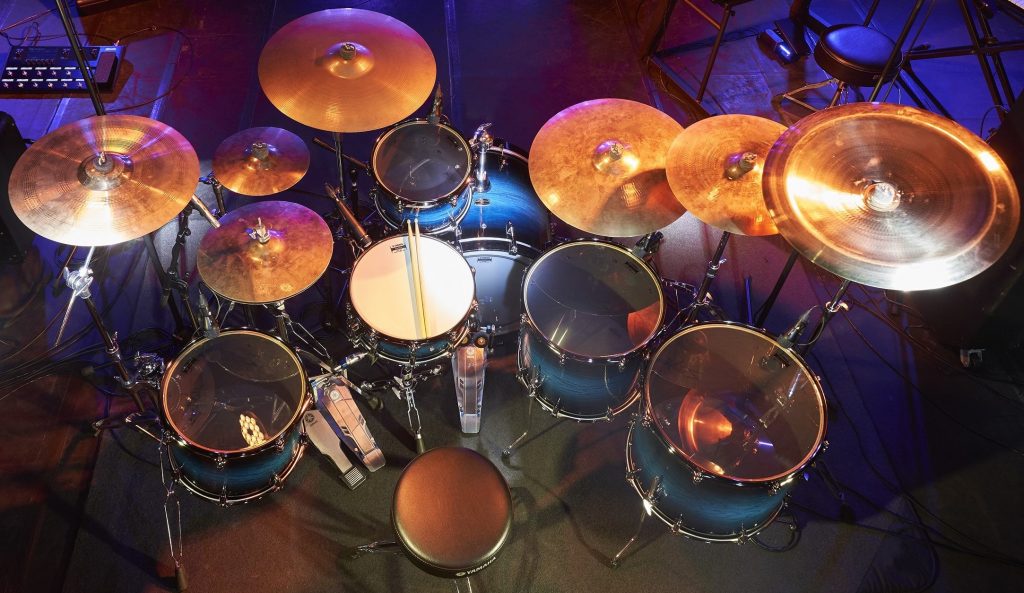School’s Out: Ten Tips for Keeping Your Drumming Skills Sharp
A summer guide for drum students.
During the school year, most of your days, evenings and weekends are tightly scheduled, and it can be tough to find the time to take a step back, re-evaluate, plan and work on your drumming. Summer is an ideal time to expand your musical goals and drumming skills, and to build your unique playing style and musical voice.
Here are 10 tips to help you do just that. You may find that many, if not all of these will also come in handy year-round!
1) Get Out of Your Comfort Zone and Into the Learning Zone
It’s best to allocate just 25% of your practice time to things you have some degree of comfort with; the other 75% should be spent working on new skills or those that you want to improve. For example, you might want to spend 5 minutes working on single paradiddles on a pad or a snare (comfort zone), but then spend another 15 minutes on the entire drum set using combinations of paradiddles to create grooves, fills, and solo ideas (learning zone).
2) Generate, Create, Innovate
Start with a basic pattern, fill, sticking technique or concept that you see in a drum book, hear on a recording or watch on a video. First learn it, then use your imagination to explore some different ways of playing it (i.e., changing or adding accents, stickings, sounds, dynamics, etc.) and make it your own. This way of practicing is known as elaboration, and it makes your learning deeper and longer-lasting. It’s also a lot of fun!
3) It’s Not About Chops, It’s About Music
Limit the amount of time you spend watching and listening to social media “experts” who focus on showing off their proficiency with difficult licks. Some of those things can be cool to play, but performing music with other musicians as a team and making the music sound better is your goal. That said, there are some great videos on social media: they’re the ones posted by experienced professional drummers and teachers, as well as companies that, like Yamaha, are dedicated to education.
4) It’s Not About the Hours, Either
How you practice is just as important as what you practice. Your sessions should be focused and free from distractions — cell phone, social media, TV, etc. Also, you don’t need a single block of 2, 3, or more hours daily in order to improve. It’s actually better if you break up your practice into smaller chunks of time, a few times a day. Research studies show that practicing something for three 10-minute sessions, even if they are separate and occur at different times, is equivalent to a single continuous 30-minute block!
I recommend 25 minutes, followed by a break of at least 5 minutes, and then return and practice for another 25 minutes. Limit the time in any one practice session to 60 minutes, with a short break in the middle. Then go and do something else — hang out with friends, play some basketball, help around the house, whatever. You can then put in another hour (or more) later that day or evening.
5) Aim to Improve Just 1% Each Day
Expecting to see big results every day can lead to frustration. Rather than concentrating on getting a lot better in one skill in each practice session, try getting just a little better. Small changes, applied regularly over time, add up and lead to significant improvement. By small changes, I mean very small — targeting 1% improvement in whatever you’re working on. If you improve by even just that small percentage each time you practice, results will actually come quicker and be more pronounced.
6) Expand Your Listening
Try to listen to many different music and drumming styles, even if they’re not your favorite (especially if they’re not your favorite). Be sure to include music from other countries and cultures where drum and percussion instruments are central to the music. The more styles you listen to, the easier it will be to develop your own style, which is your ticket to drumming success. (Here’s a link to a short list of some recommended styles, drummers and recordings.)
7) Practice With Music
The best drummers are the ones who help to make the music sound great. Drummers typically spend a lot of time practicing alone without musical accompaniment, but I highly recommend listening to and playing along with music as often as possible (recordings, play-alongs, loops) and especially with other musicians. Although you can always practice with a metronome, try and play with music instead, focusing on keeping steady time, maintaining a good feel, and making the kinds of good musical choices that you learn from listening and doing.
8) You Don’t Always Need Sticks
Of the three important critical drumming skills — playing, listening and knowing — two can happen almost anytime and anywhere without sticks or drums. In addition to listening to a wide range of musical styles, reading about drummers and other musicians, as well as different cultures and drumming history, informs the choices you make about how and what to play. It also helps you realize that you are part of a world-wide community of people just like yourself who love music and playing drums. Terrific sources of interesting and valuable information can be found on the websites of drum, cymbal, drumhead and stick companies … and, of course, on this blog!
9) Balance Your Practice
Try to find some time each day to work on the following areas too:
- Facility: technique, movement, coordination, reading and timing
- Musicality: style, touch, tone, feel, groove and listening
- Originality: improvisation, experimentation, tunings, set-ups, triggering, etc.
10) Work on These 5 Valuable Factors
- Stickings. Singles and doubles in every combination and rhythm (8ths, 16ths, triplets, etc.) are especially important, particularly when applied to the entire drum set (see tip #1).
- Your feet. Muscular and neural development of your feet and legs, along with coordination with the hands for accurate timing and volume balance, are critical to developing drumming “feel.” Practice 4-way coordination and focus on rhythmic accuracy and substituting between the hands and the feet.
- Tempos. Practice through a wide range of tempos, including those that are very slow. Many styles of jazz, rock, metal, R&B, Brazilian and Afro-Cuban music are played at tempos from very slow to very fast, so make sure to play them that way.
- Consistent timing. Playing “in the pocket” is dependent on keeping consistent time. There are many ways to develop this, including playing with loops and clicks.
- Self-evaluation. Regular, even daily, feedback is one of the keys to your growth and improvement as a drummer. Record your practice sessions often, then listen back and identify (or ask a teacher to point out) areas and suggestions for improvement.
Good luck, and have fun with your drumming practice this summer!














